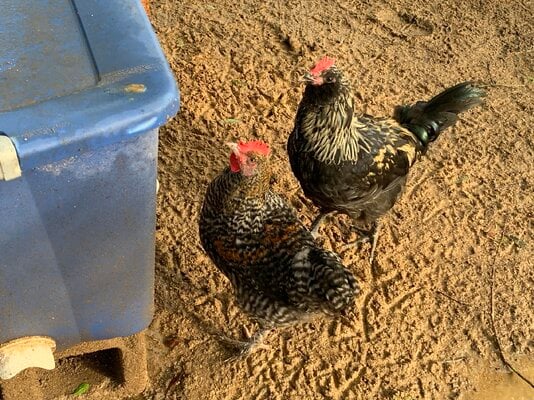I Love Feather Babies
Songster
Not sure. I got her and two others from some friends of mine that they incubated. They have some that lay a deep olive color and I told them I would love to some. Of the 3 that hatched, she is the only pullet. The other two are cockerels.She is really cool looking! I’m not used to seeing that combo at all. What breed or breeds is your pullet?






 I thought I could get there logically, but then to make sure I wasn't missing anything...!
I thought I could get there logically, but then to make sure I wasn't missing anything...!